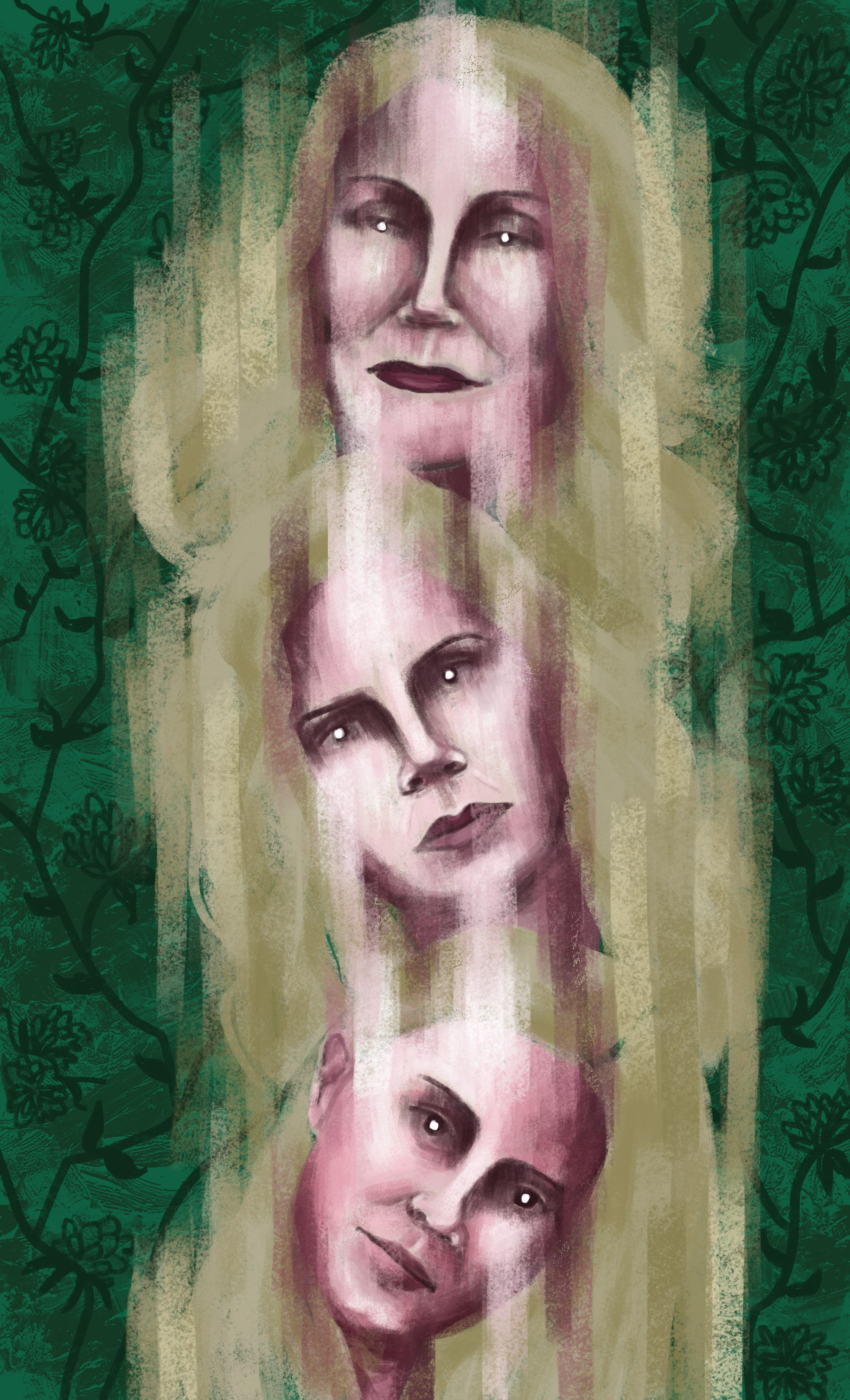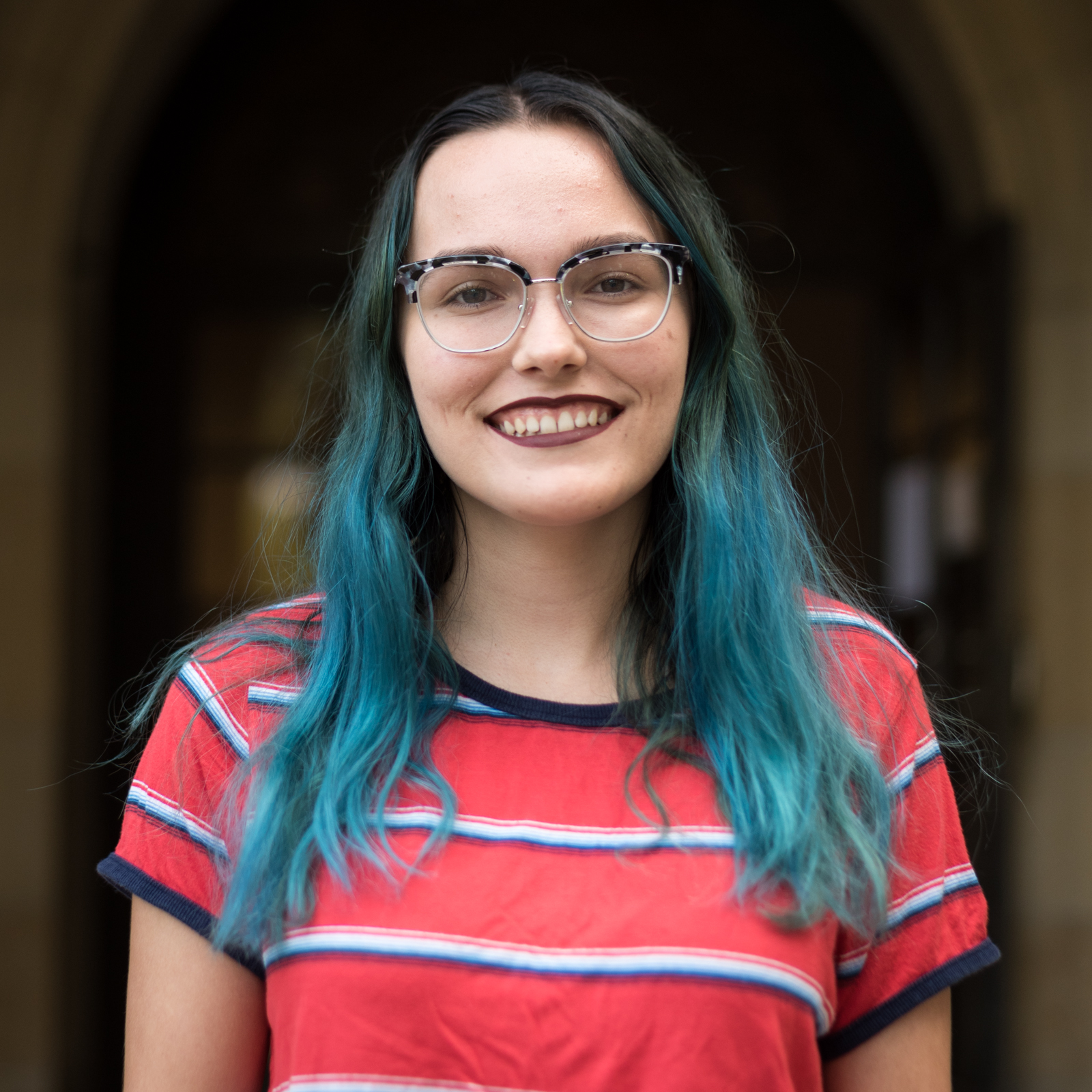Alumni explore physical, psychological violence in HBO miniseries ‘Sharp Objects’

(Andrea Grigsby/Daily Bruin)

By Kristin Snyder
Sept. 8, 2019 8:19 p.m.
People say there’s nothing quite like the love between a mother and a daughter. But in “Sharp Objects,” that relationship is fraught with tension and grief.
The HBO miniseries, based off the 2006 debut novel by Gillian Flynn, follows Camille Preaker (Amy Adams) as she returns to her hometown of Wind Gap, Missouri to report on the mysterious, gruesome death of two young girls. But her homecoming does not elicit sentimental nostalgia – Wind Gap houses a dead sister, a critical mother and haunting memories. As the investigation thickens, Camille finds herself caught up in the past she thought she had left behind.
Alumna and executive producer Jessica Rhoades said the show explores violence in various forms. What initially drew her to the project was reading “Sharp Objects” creator Marti Noxon’s pilot script over the holidays, which led her to pause her festivities and call someone to immediately discuss the broken family at the show’s center. As a producer, Rhoades worked with both Noxon and director Jean-Marc Vallée to translate the highly-intimate novel to a visual creation – one which is often characterized by both internal and external violence.
“So much of Gillian’s novel takes place in Camille’s mind and in her point of view,” Rhoades said. “(Noxon) brought these incredible layers of both memory and an alcohol-fueled point of view into the story telling.”
[RELATED: LGBTQ focused narrative in “Pose” tells story of ballroom dancing as safety net]
As Camille grapples with a history of self–harm and alcoholism, executive producer Gregg Fienberg said the amount of violence they depicted was both a matter of taste and necessity for exploring her character. “Sharp Objects” is primarily a psychological thriller, the alumnus said, and it was necessary to explore self-harm in order to better understand Camille’s psychological state in relation to her childhood in Wind Gap.
Fienberg said Vallée depicted just enough violence for viewers to understand the story without crossing into the realm of gore. As Camille discovers the body of a young girl propped up in a windowsill, the camera glances over the mutilation, instead focusing on the look of horror on Camille’s face and the elderly woman sobbing and praying at her feet.
When it was important for the storytelling, Rhoades said they did explore self-harm – such as the reveal of the scars covering Camille’s body and exploring her time in a rehab facility – but it was a topic approached with care. The show added trigger warnings for both self-harm and substance abuse, as well as contact information for the Substance Abuse and Mental Health Services Administration (SAMHSA). Though they were not required to do so, Rhoades said they felt responsible for crossing any lines, and it was important to provide access to an organization that could handle a potentially large number of viewers reaching out.
“Any show that involves self-harm or violence, you do want to be careful about making it repeatable or actually teaching someone,” Rhoades said. “We explored the self-harm, we were cautioned … that we didn’t want to romanticize it or, frankly, make it pleasurable and/or triggering for anyone who was going through a personal issue on their own.”
[RELATED: Alumna Ava DuVernay’s series to set Exonerated Five’s truth free]
Violence in “Sharp Objects” also doesn’t only come through in physical ways; it shines through in how the three leading women coexist, Feinberg said. Following these women as they interact with each other in ways that are often emotionally painful – Camille’s mother Adora once reveals that she was never able to love her – allows viewers to relate to this family in some way or another, he said. The physical violence is abundant, but what draws people in is watching Camille, Adora and the younger sister Amma go toe-to-toe, he said.
“You have a hook right from the beginning and something happens and you don’t know who did it so you have this mystery going throughout the story, which is a great storytelling device,” Feinberg said. “But it’s a wrap around for a much deeper, psychological story.”
The complicated family dynamics contribute to the more ambiguous violence passed among the three main women – Adora detests Camille’s sleuthing, and Amma loathes Adora paying attention to others. Patricia Clarkson, who portrays Adora, said it is the broken family that draws people in, as many viewers can likely relate to such tricky dynamics. But becoming Adora was specifically difficult, Clarkson said, as the matriarch is one of the most complex characters she has encountered over her career.
At first, Clarkson said she wasn’t sure if she was capable of it, but she was determined to love the formidable woman as she examined both the external and internal desires of Adora. Clarkson said Adora has similar desires as others – she wants her children to prosper and her spouse to be happy, but simply has radical and detrimental ways of doing so. The show depicts a type of violence – both physical and emotional – that is passed down from mother to daughter, Clarkson said.
“I hope we’re getting better at ending this generational violence, but it does have to start in the home,” Clarkson said. “Somebody in the home has to end it. And that’s the beauty of (Adams) and this character – she’s ending it. It takes someone with courage.”
Closely following a deeply introspective viewpoint throughout the show allowed the show to explore how various forms of violence have impacted Camille’s life, Rhoades said. And in following this fractured family, Rhoades said both Flynn and Noxon worked to allow audience members into these women’s lives, creating a space for this kind of violence to finally enter the cultural conversation.
“I don’t think before ‘Sharp Objects’ there’s been a book – and now, I hope, a series – that’s really looked at generational violence between women and how we pass down pain and also the instinct to hurt ourselves and one another,” Rhoades said. “Hopefully, we tapped into that in ways that are painful but also allows you to explore the conversation.”


